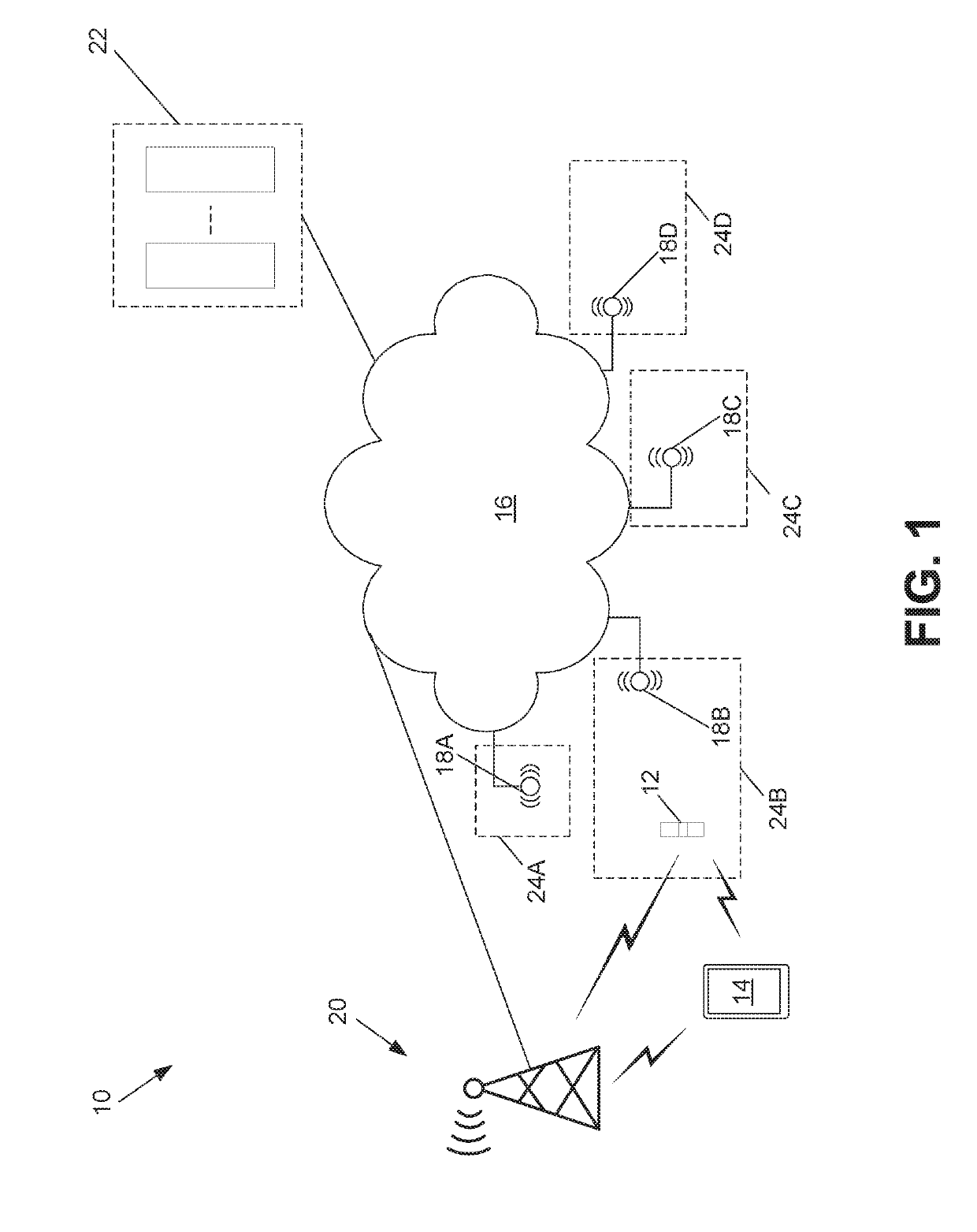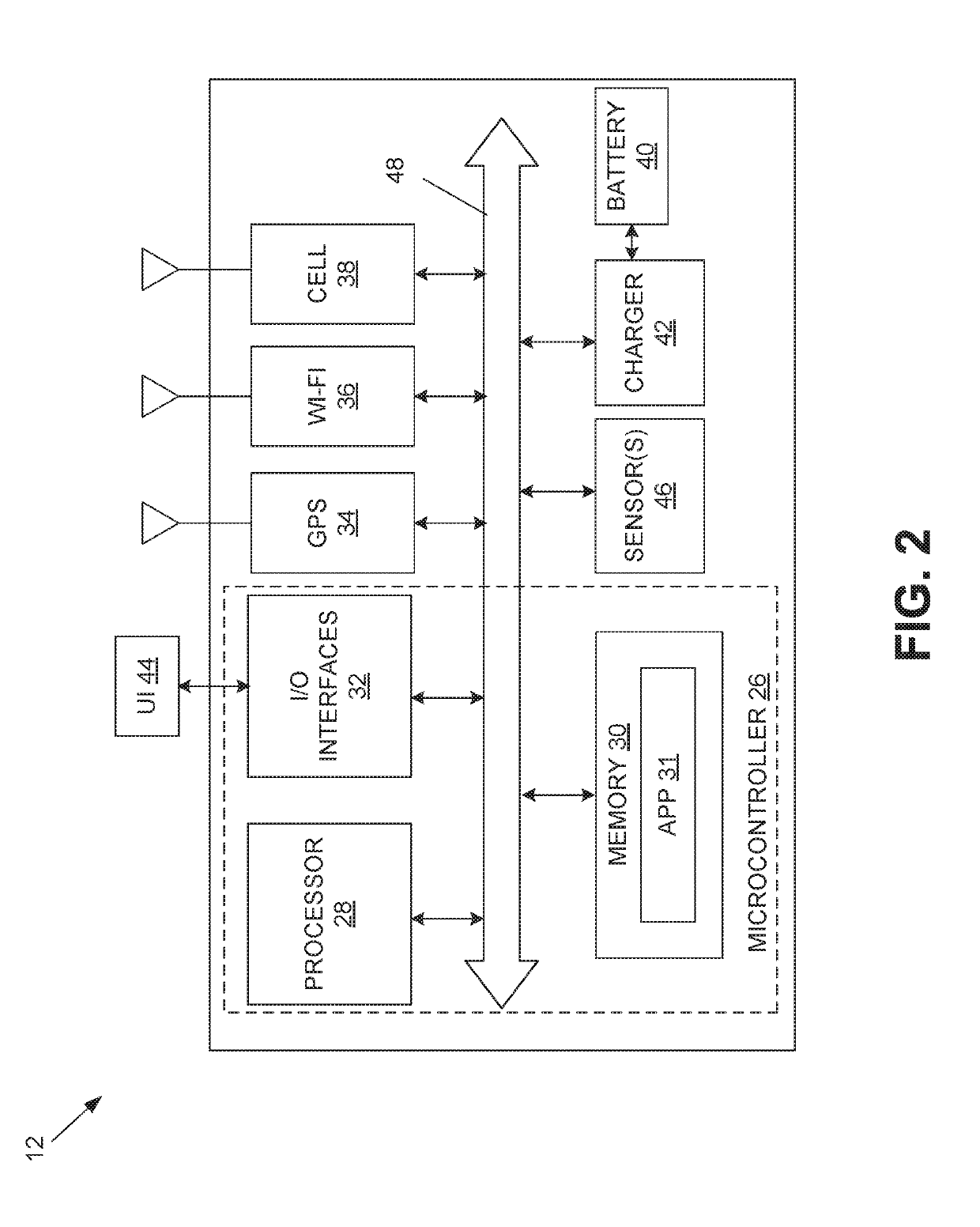Wireless location recognition for wearable device
a wearable device and location recognition technology, applied in the field of mobile communications devices, can solve the problems of requiring the user to recharge the battery frequently, the center may not be able to accurately locate the mpers device, and the location fix via gps operation is very power-consuming, so as to improve the accuracy of location determination, memory conservation, and power consumption
- Summary
- Abstract
- Description
- Claims
- Application Information
AI Technical Summary
Benefits of technology
Problems solved by technology
Method used
Image
Examples
Embodiment Construction
[0020]Disclosed herein are certain embodiments of a mobile, personal emergency response system (MPERS) device and method that make use of nearby external devices (e.g., wireless fidelity (Wi-Fi) access points (APs), Bluetooth-enabled devices, Internet-of-things devices, etc.) to save battery power by recognizing the MPERS device as being at a same location, or further identifying the MPERS device being at a home location, so as to shut off (e.g., power down to a sleep mode or turn off power to the component) a routine location positioning operation (e.g., GPS location fix or cell tower triangulation). Functionality for home location recognition may also enhance the MPERS device's locating performance / speed during, for instance, transmittal of alarms, since when a GPS fix is not available at home, a personal emergency response system (PERS) service center is able to determine the device relative location quickly (e.g., the home location) without going through a further locating proce...
PUM
 Login to View More
Login to View More Abstract
Description
Claims
Application Information
 Login to View More
Login to View More - R&D
- Intellectual Property
- Life Sciences
- Materials
- Tech Scout
- Unparalleled Data Quality
- Higher Quality Content
- 60% Fewer Hallucinations
Browse by: Latest US Patents, China's latest patents, Technical Efficacy Thesaurus, Application Domain, Technology Topic, Popular Technical Reports.
© 2025 PatSnap. All rights reserved.Legal|Privacy policy|Modern Slavery Act Transparency Statement|Sitemap|About US| Contact US: help@patsnap.com



